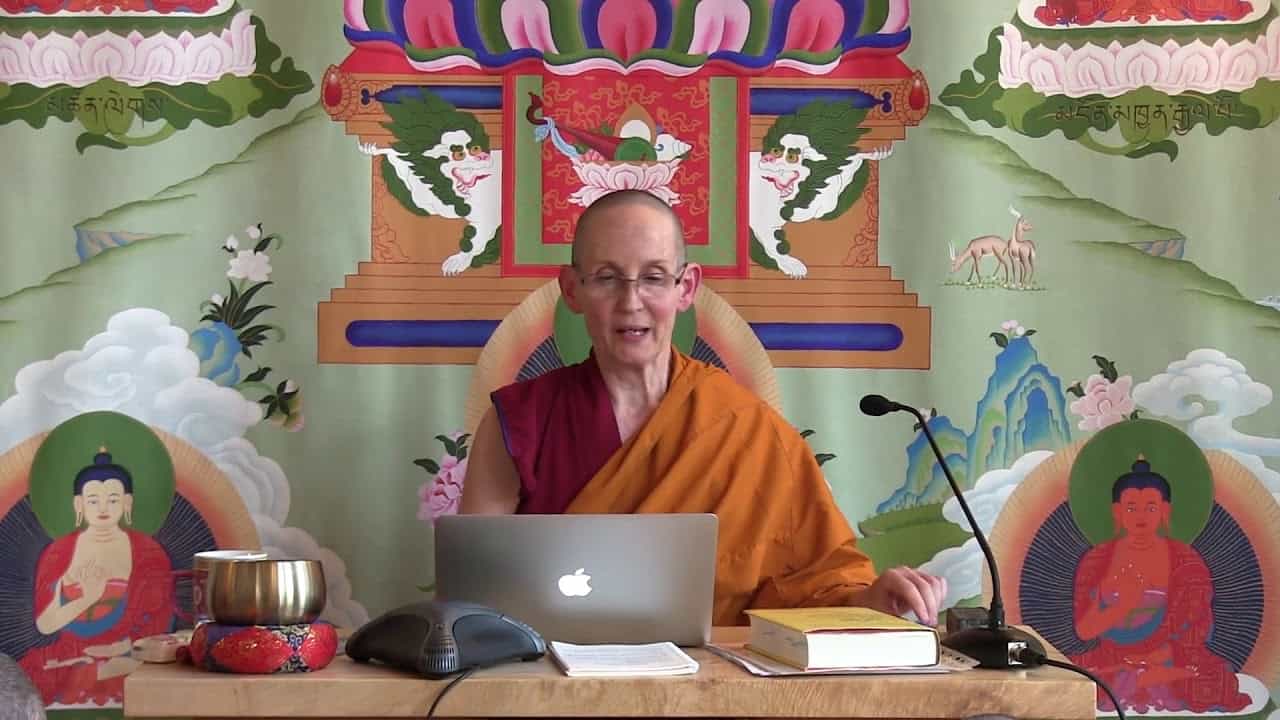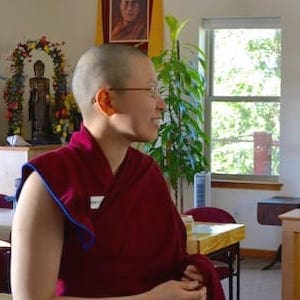Review of cultivating insight into emptiness
Review of cultivating insight into emptiness
The text turns to training the mind on the stages of the path of advanced level practitioners. Part of a series of teachings on the Gomchen Lamrim by Gomchen Ngawang Drakpa. Visit Gomchen Lamrim Study Guide for a full list of contemplation points for the series.
- Ignorance grasping true existence is the root of all dissatisfaction
- Review of the views of different tenet systems
- How the realization of emptiness works to eradicate ignorance
- The causal sequence that leads to suffering
- The two roots of samsara
139 Gomchen Lamrim: Review of Cultivating Insight into Emptiness (download)
Contemplation points
- Why is it that the wisdom realizing emptiness is the only thing that overcomes samsara?
- Venerable Semkye said that it’s important for us to understand that because of our self-grasping ignorance, we create suffering for ourselves. What is self-grasping ignorance and what are some examples from your own life of ways that it has led to problems?
- What does it mean that things appear truly existent? Why is this appearance false? If it is helpful, use the example of being born with sunglasses on that Venerable Semkye discussed in the teaching.
- How do the views of the mere “I” differ between the Cittamatra, the Svatantrika Madhyamaka, and the Prasangika Madhyamaka tenet systems? Refute the first two.
- Consider the analogy of the knapweed that Venerable Semkye used in the review. How is picking a weed like eliminating the root of samsara in your mind?
- Consider the causal chain that fuels samsara: grasping at true existence gives rise to distorted attention which exaggerates the good or bad qualities of an object, which gives rise to afflictions, which gives rise to action/karma, which leads to all the results of the dukkha of samsara. Think through each step and why one leads to another. Why, when ignorance is removed, does the entire chain stop?
- Consider the analogy of seeing a face in the mirror. How is seeing the appearance of a face in a mirror similar to seeing the appearance of an inherently existent person? How does each appear? What is each dependent on? How can you use this analogy to start chipping away at ignorance in your own mind?
Venerable Thubten Semkye
Ven. Semkye was the Abbey's first lay resident, coming to help Venerable Chodron with the gardens and land management in the spring of 2004. She became the Abbey's third nun in 2007 and received bhikshuni ordination in Taiwan in 2010. She met Venerable Chodron at the Dharma Friendship Foundation in Seattle in 1996. She took refuge in 1999. When the land was acquired for the Abbey in 2003, Ven. Semye coordinated volunteers for the initial move-in and early remodeling. A founder of Friends of Sravasti Abbey, she accepted the position of chairperson to provide the Four Requisites for the monastic community. Realizing that was a difficult task to do from 350 miles away, she moved to the Abbey in spring of 2004. Although she didn't originally see ordination in her future, after the 2006 Chenrezig retreat when she spent half of her meditation time reflecting on death and impermanence, Ven. Semkye realized that ordaining would be the wisest, most compassionate use of her life. View pictures of her ordination. Ven. Semkye draws on her extensive experience in landscaping and horticulture to manage the Abbey's forests and gardens. She oversees "Offering Volunteer Service Weekends" during which volunteers help with construction, gardening, and forest stewardship.


